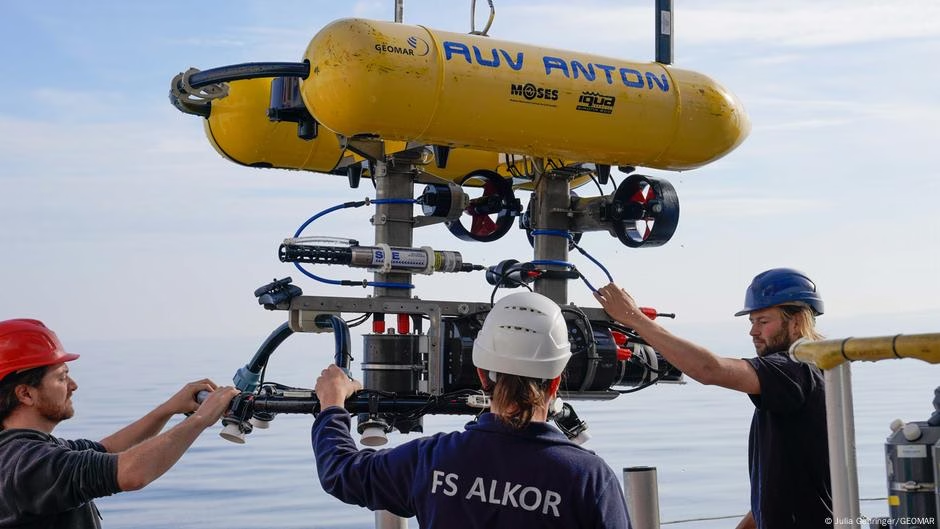Germany’s coastal waters harbor an estimated 1.6 million metric tons of conventional munitions, with the majority found in the North Sea and the rest in the Baltic Sea. Among these are also believed to be several thousand tons of chemical weapons. Most of these weapons have lain untouched for over 80 years, with the threat from these underwater munitions being more insidious than the bomb discoveries on dry land that close down neighborhoods and transport networks.
Growing concerns over potential contamination have led to plans for a large mobile platform capable of autonomously retrieving and disposing of old weapons from the seabed. This pioneering project was introduced at the UN Ocean Conference in Nice, France in June.
Sebastian Unger, the marine conservation director at Germany’s Environment Ministry (BMUKN), explains that recovery operations have so far only been conducted in cases of imminent danger. The focus is now on addressing environmental and marine conservation issues, as well as reducing human health risks. The project aims to address the problem of dumped WWII munitions that include the explosives and mines discarded by Allied bombers returning to Britain. The majority of these armaments were dumped into the sea after the defeat of Nazi Germany in 1945.
Recent findings have revealed that these dumped munitions are decomposing, releasing toxic chemicals such as TNT. Lumps of white phosphorus or explosive mixtures have been found washing ashore, resembling amber or minerals and causing injuries to beachcombers.
Toxicological tests conducted on mussels in the dumping sites have shown traces of carcinogenic chemicals contained in the munitions. Edmund Maser, a toxicologist from the University Hospital of Schleswig-Holstein (UKSH), suggests that although the concentrations are minimal, they pose a potential risk to the marine ecosystem.
GEOMAR, a Helmholtz Center for Ocean Research, has been studying the weapons on the seabed using various technologies. They discovered boxes of munitions stacked like they had been recently unloaded and bombs piled up. The recovery process poses significant challenges due to the shifting marine environment and the variety of munitions present. There is also the risk of the release of toxic chemicals like TNT during retrieval and disposal.
German environmental organization NABU emphasizes the urgency of starting the clean-up operation as soon as possible. Although financial concerns exist for the long-term operation of the planned platform, NABU believes that more than one floating platform is needed to address the extensive problem.
The pilot and next phase of the munitions recovery project were funded through a €100 million emergency program from the federal government. The platform is expected to be ready for deployment by late 2026 or early 2027. The project’s approach is also intended for adoption in other contaminated marine areas worldwide. Operations in German waters will likely prioritize ecologically sensitive zones and areas with significance for the tourist industry, although this is still under consideration.
Source: https://www.dw.com/en/germany-tackles-explosive-wartime-legacy-at-sea/a-72900336?maca=en-rss-en-all-1573-rdf








